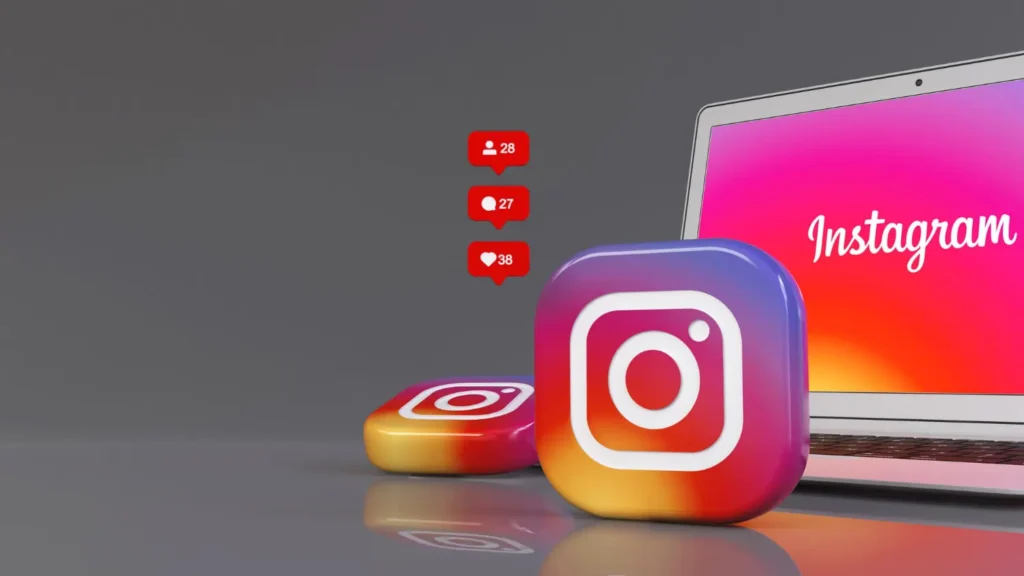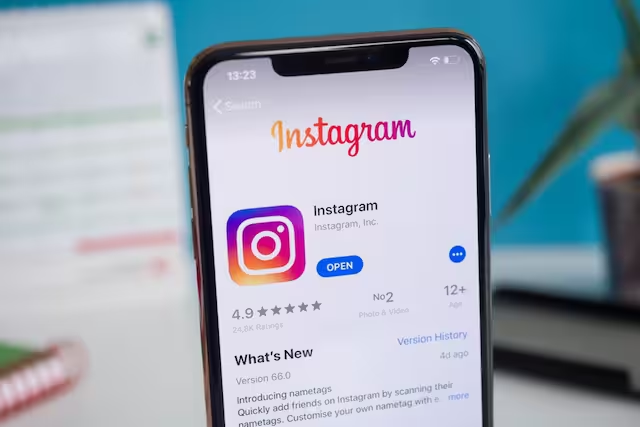‘’Instagram’’ a name closely associated with contemporary social networks – was not just an ordinary image sharing application but became an icon. In the last decade, it has revolutionized how we communicate and socialize and even the way we sometimes perceive reality. Examining the given topic, it is possible to outline several important phases of Instagram, which indicate significant changes in social media and society in general. In this article, I will provide readers with a brief insight into the history of Instagram, as well as discuss the trend of the platform’s growing popularity, using an overall social media growth analysis. while doing
The origin of Instagram
Instagram started in 2010 when Kevin Systrom teamed up with Mike Krieger to launch the application. It was initially created as an app for iPhones to catch on with the trend of mobile photography and the need for an easy to use image sharing application.
The name of the application itself indicates that it is based on the founders’ idea of instantly shareable moments as it combines the terms “instant camera” and “Telegram”. When first launched, Instagram was similar to today’s, but its functionality was quite basic as it was basically an app for sharing photos with few filter options and editing tools.
The app concept without text and simplicity quickly found its audience and within two months of Instagram’s launch, it already has a million active users. Being developed before most of the social media platforms were popular at the time, the platform’s focus on minimal design elements had a very intuitive interface that quickly attracted many users.
The way Facebook became the king and queen of social media
Over time, it has been realized that Instagram is more than just a temporary phenomenon of a social networking site. It continued to expand and by 2012 it had registered 30 million users, making it a household name for tech giants. Different from the traditional social networking site, in April 2012, Facebook bought Instagram for $1 billion in cash and stocks in what was perceived as the potential of the platform to determine the future of existence.
The main event in the evolution of Instagram was the acquisition by Facebook. With the help of affiliation with Facebook, Instagram expanded its attributes and functionality. In 2013, a great addition was made with the introduction of video sharing where users could share a 15-second video.
Within the existing framework, Instagram extended it to 60 seconds, which created new opportunities for users and distinguished the application in a growing subgroup of social networks. Instagram’s expansion continued in 2013 with the addition of Instagram Direct. The application’s messaging functionality allows users to send private messages to their friends.
This change transformed Instagram from an application strictly for making posts visible to everyone, to an application for posting content that allowed direct messaging to each other. Hence, Instagram turned into a more flexible application for daily life as well as work experience.
The Introduction of Instagram Stories
Instagram’s most prominent year was 2016 when the application introduced Instagram Stories. Inspired by Snapchat’s SnapMap, Instagram Stories lets users post regular photos and videos that can only be viewed for 24 hours.
This feature quickly became decisive in growing the number of users to millions, who loved the fact that stories were temporary. This is because Instagram Stories not only evolved the type of interaction between accounts and users but also added new ways to it.
Daily content, behind-the-scenes photos or videos, and interactive polls all played around the stories to strengthen relationships and engagement with people. As of 2018, Instagram stories are used by more than 400 million people daily, proving Instagram’s stronghold on the social media market, surpassing the host platform Snapchat.
The success of Stories also formed the basis for the development of new additions to the app, including polls, quizzes, and a “swipe up” link, all of which improved the application’s usability and usability.
The subject of study is the evolution of Instagram’s algorithm
Over the years, Instagram became popular and the problem of moderation related to the dynamically increasing amount of posts appeared. Consequently, in September 2016, Instagram launched what would become infamously known as its algorithm.
The change replaced the linear timeline feed with a rank that responded to users’ interactions, connections, and preferences. People had different attitudes towards using the new algorithms introduced. Some users liked the fact that the application filters the content that everyone is interested in, while others lamented that not all news is sorted in chronological order.
Nevertheless, the algorithm proved to be a hallmark of Instagram that influenced its further development and the way content was delivered. It can be said that the given algorithm played an important role in shaping the further development of Instagram.
It influenced users’ use of the platform by increasing likes, comments, shares, and visibility. This change also affected influencers and they started partnering with their brand with products used on their Instagram accounts. This is born influencer marketing.
The Growth of Influencer Culture
Today, one can hardly overestimate Instagram’s role in popularizing the practice of using influencers. Over time, the harvest of social value increased with more users sharing high-quality and aesthetically pleasing images with large follower lists.
These people, called influencers, soon became central to social media networks. Brands have never had a more effective and efficient way to reach highly specific audiences than they do now with influencer marketing.
Instagram’s visualization elements proved to be perfect for introducing goods and services, and influencers turned into trusted industry consultants in various sectors, such as fashion, cosmetics, tourism, and sports.
It also contributed to the appearance of new Instagram features that will help promote branded content identified in influencer marketing. Launched in 2017, the “Paid Partnership” tag lets influencers tag sponsored posts, allowing Instagram Shopping to make in-app purchases.
So, it is undeniable that Instagram played a very important role in enabling the influencer culture. The platform offered a space for brands to interact with audiences, erasing the boundaries between advertising and social media, as influencers grew and transformed the marketing field.
The effect of Instagram on the visual system
Thanks to Instagram, people have changed the way they see the world, turning the aesthetic experience into a creative medium. In this regard, the platform’s focus on images and videos has changed how we capture and engage with reality. Instagram is the platform that introduced the way to post, share, and engage with just photos and videos.
Instagram continues to popularize photography, fashion, and design trends. There is no doubt that through the filters and editing tools included in this app, trends have prevailed, and minimal, flat methods, and even known as the ‘gram moment.
There are articles and even research that has been done on this phenomenon called ‘Instagram ability’ to the extent that physical spaces such as business buildings and restaurants are being designed for Instagramming purposes.
Instagram has also helped break the barrier of photography and visual content production. Thus, smartphone and mobile photography have become intertwined and everyone can take and share professional quality photos. This democratization has created a new level of artists, who use Instagram as the primary platform to launch their careers as photographers, videographers, or digital artists.
Case in point: Instagram in social movements
Despite this steady and impressive growth, Instagram has not been immune to changes in society, with hundreds of primarily global social activities. Thanks to this, officials can quickly raise awareness, engage communities, and bring a particular issue or group of people to the public’s attention.
Whether it’s police brutality against blacks the need to protect black lives, or environmental protection as in the case of Greta Thunberg’s Friday for the Future movement, activism has taken center stage on the platform. Instagram being a highly graphical interface allows users to share strong images and videos that convey important messages, unlike written ones.
Due to the openness of a given platform and its availability to a large audience, it can be a powerful tool for initiating discussions about specific issues as well as bringing people together in support of relevant social issues.
Instagram has also started going out for social justice by launching options like Donation Stickers that help users raise money for certain social issues right on the app. The feature also goes to the fact that the application was initially created as a toy that enabled users to share photos and became a world-renowned platform that could change people’s lives.
The future of Instagram
This means that as Instagram evolves new problems arise and new opportunities appear for the platform. The evolution of more significant competitors, including TikTok, increased Instagram’s awareness and suggested appropriate changes.
Instagram Reels was launched in response to the popularity of TikTok in 2020 and is an Instagram feature that enables users to create and post short-length videos with music. Based on the current trends, it can be assumed that e-commerce for Instagram is still developing, so sections like Instagram Shopping will become more active in the future.
The platform’s work in influencing trends in photography, design, and marketing will continue to evolve through its focus on this form of media as it plays a role in social change and activism. Thus, the growth of Instagram does not stop there. Following the changes in technology and user interactions with available social media, Instagram is poised to change the future of social media platforms.
One thing is certain: Instagram is one of the social networks that has experienced a process of evolution throughout the history of social networks and the story continues.
Conclusion
After initially being launched as just an app for sharing photos, Instagram has come a long way to become one of the leading social media platforms in the modern world. It has not only revolutionized the way of communication and communication but has also influenced major cultural and social factors. Therefore, in the future, Instagram will continue to be a dominant factor in the field of social networking because it helps to change and define trends in the field of Internet communication.
FAQs
How has Instagram changed over time?
Instagram has evolved from a simple application that only allows the sharing of photos to a complex platform with video, stories, reels, direct messages, and even sales. It has evolved over the years in response to other social media and communication technologies.
What role has Insta played in creating an influencer culture?
By connecting people, enabling them to build large followings, and collaborating with companies, Instagram has contributed immensely to the influencer genre. Influencer marketing is considered an important focal point of social media platforms, especially since Instagram has grown so much as a visual platform.
What role has Instagram played in influencing visual culture?
Instagram can be seen as a phenomenon, which is busy spreading the practice of using images to convey messages, influence different areas of people’s lives, and allow anyone to share content. This shift resulted from the fact that the platform focuses on the visual aspect of content, thus changing the way people perceive reality.
What does Instagram look like for the future?
When it comes to future development trends, Instagram will continue to expand sales options and methods, evolve with innovations due to the appearance of TikTok, and play a major role in activity movements. It will continue to be influential in defining and influencing the Internet as well as communication and visual aesthetics for years to come.

